How to finish and display your paintings on paper : A few options
April 13, 2015 2025-02-09 18:18How to finish and display your paintings on paper : A few options

How to finish and display your paintings on paper : A few options
If you are working on paper, you have a few option to display your paintings on paper, from traditional framing to mounting your paper on board, as well as a few options to protect the paper if you display it unframed. Here are some of the main choices listed.
You might also like: How to make your own lightbox for tracing on watercolor paper
Framing or not framing: How to display your paintings on paper
You can frame your painting under glass or Plexiglas
I recommend using a simple frame and a white or off white mat. If you apply to renting programs, your work will have a better chance to be selected if the mat is white or at least of a neutral color. Plexiglas is safer and sometimes mandatory if you ship your painting.
It is a good idea to always paint the same size as you can switch and reuse your framing depending on your needs. This is a good solution especially if you are selling your paintings online with the option of buying them framed or unframed. You can then store your unframed paintings in a drawer, so it takes way less space.
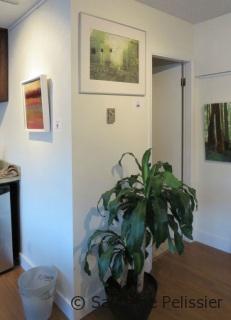
I painted a series of watercolor that are all the same size so I can switch the framing if needed. They are sold framed or unframed on my website.
You can display your paintings on paper by mounting your painting on board
Read more about mounting your paintings on board here
I like the simple look of paintings on paper mounted on board, it works very well with thick watercolor paper or yupo paper.
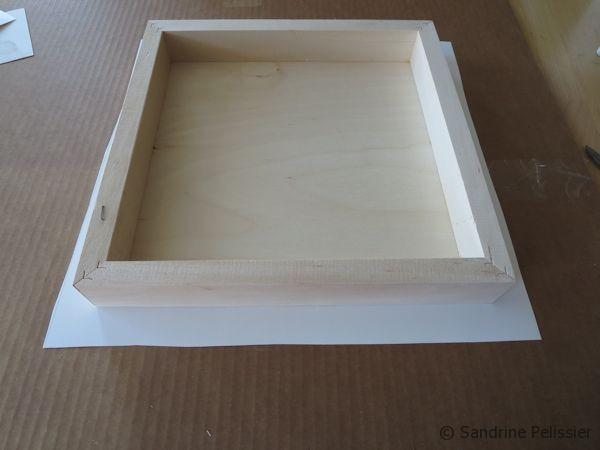
Mounting your paper on board is an excellent option if you wish to display your work on paper unframed.
You could also try to hang your paintings on scroll, or display them with magnets holding them to a pin on a wall. The disadvantage of this technique is that your paper will be unprotected and it might make buyers a bit nervous, although I must say it looks very good.
Applying a layer of varnish or wax to make the paper water-resistant to display your paintings on paper without a frame
If you paper is unframed, you can choose to apply a layer of protection from water and humidity. I sometimes use varnish and sometimes use wax for that purpose.
Read more here on applying a wax finish to a watercolor painting.
Wax is more pleasant to use as it natural and doesn’t have a strong smell, but I use it mainly on watercolor or acrylic paintings as you have to apply it with a soft fabric or tissue. I would not use it on mixed media pieces with pastel for example. Varnish as the advantage of providing some measure of UV protection that the wax will not provide.
Before applying a layer of finish, I recommend you spray your painting with Krylon workable fixative, it will fix all dry media (like graphite or pastel) and avoid any smudging of watercolor paint, markers…
I am a Blick Art Materials affiliate and I receive a small compensation for sales. That does not effect in any way the cost of the purchaser’s order but it helps me keeping the content of this blog free.

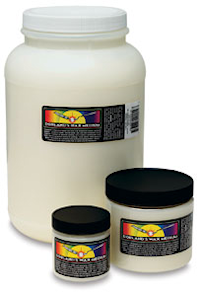 |
Dorland’s Wax MediumAdds translucency to oil paints, making them more brilliant. Also used as a final coat on dry paintings, metal sculpture, wood carvings, and antiques. May buff to gloss finish. Thins with turpentine. |
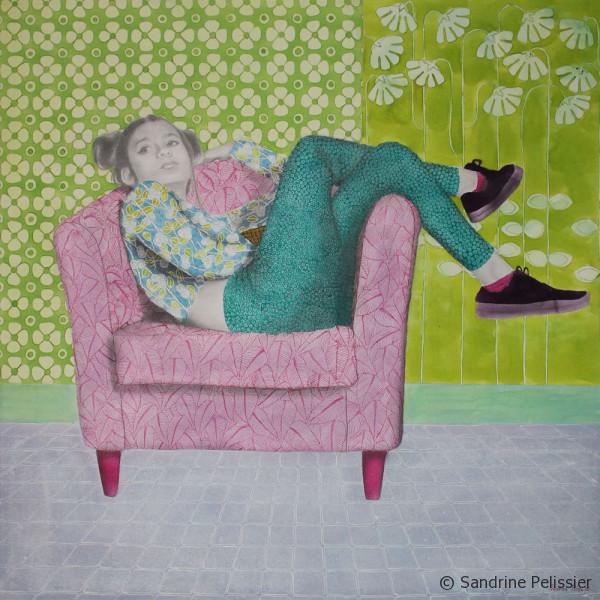
Spraying your work with Krylon workable fixative will make it possible to apply varnish on top of graphite. This is what I did on this example: Slice of Life- part I (Acrylic and mixed media on canvas).
If you choose to brush a layer of varnish as a finish, you also have the option of spraying a first layer and let it dry before brushing subsequent layers. Be careful, varnish applied to a paper support cannot be removed. You might want to try it on a small area of the painting before varnishing the whole surface.
I am a Blick Art Materials affiliate and I receive a small compensation for sales. That does not effect in any way the cost of the purchaser’s order but it helps me keeping the content of this blog free.

 |
Krylon Workable Matte FixatifGives lasting protection to pencil, charcoal and chalk, yet erases easily. Clear, matte fixative is easy to work with. Dries in seconds, doesn’t wrinkle, smudge or smear. Spray can. |
A few tips before applying varnish:
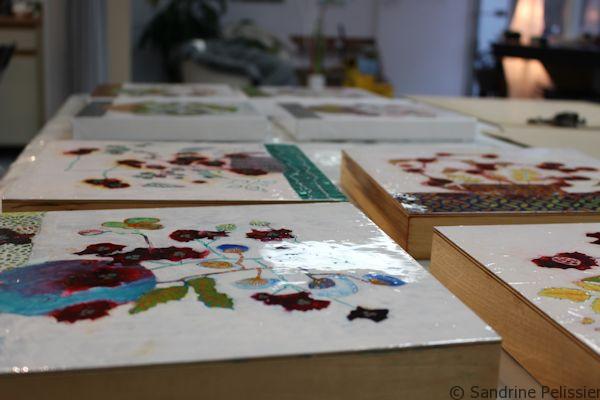
Applying varnish on a few mixed media paintings, they are done on yupo paper mounted on board.
- Make sure your brush is very clean, a brush that is left in the open will accumulate a surprising amount of dust and little fibers that will show on your painting. You can store your varnishing brushes in a sealed container to avoid that.
- Apply varnish on the painting in an horizontal position, like laying on a table or on the floor so you can avoid any drips
- Apply varnish in a well ventilated area as it can smell pretty strong.
- Read the instruction to know if you should dilute the varnish with water or not and if you should clean it with water or with paint thinner.
- Check if your varnish is suitable for your medium. In mixed media it sometimes happens that we mix water based media with oil based media. In that case you need to use a varnish that is suitable for both, I am using Liquitex Soluvar or Gamvar varnish.


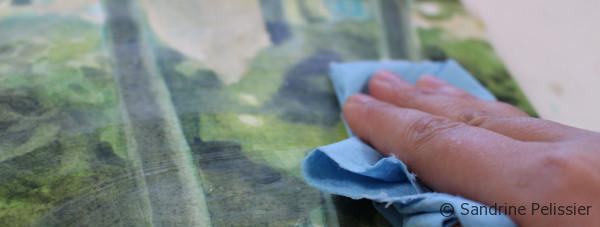
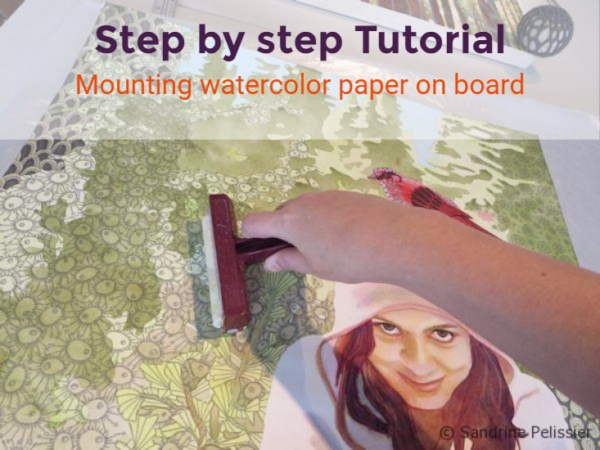


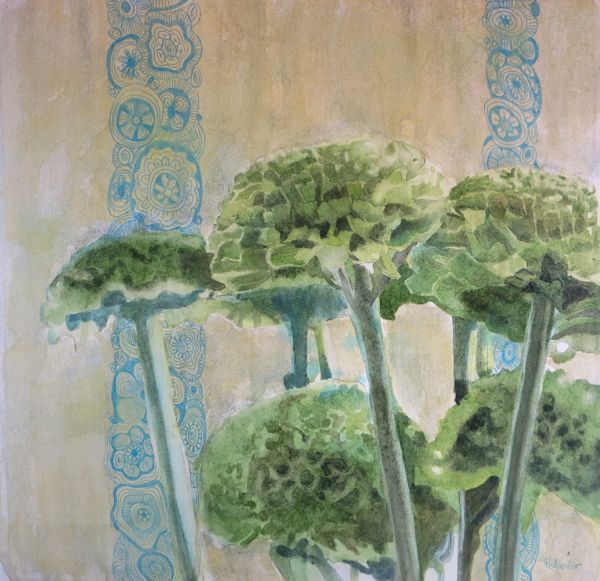

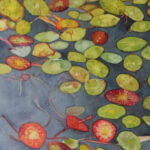
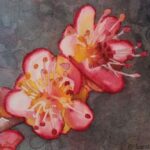
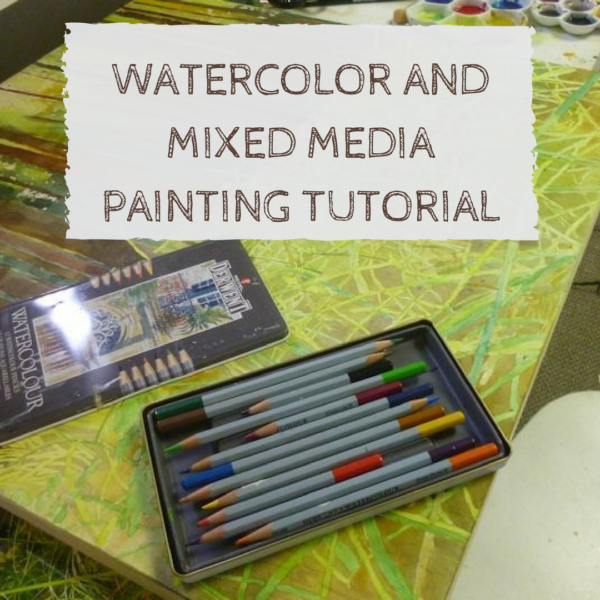



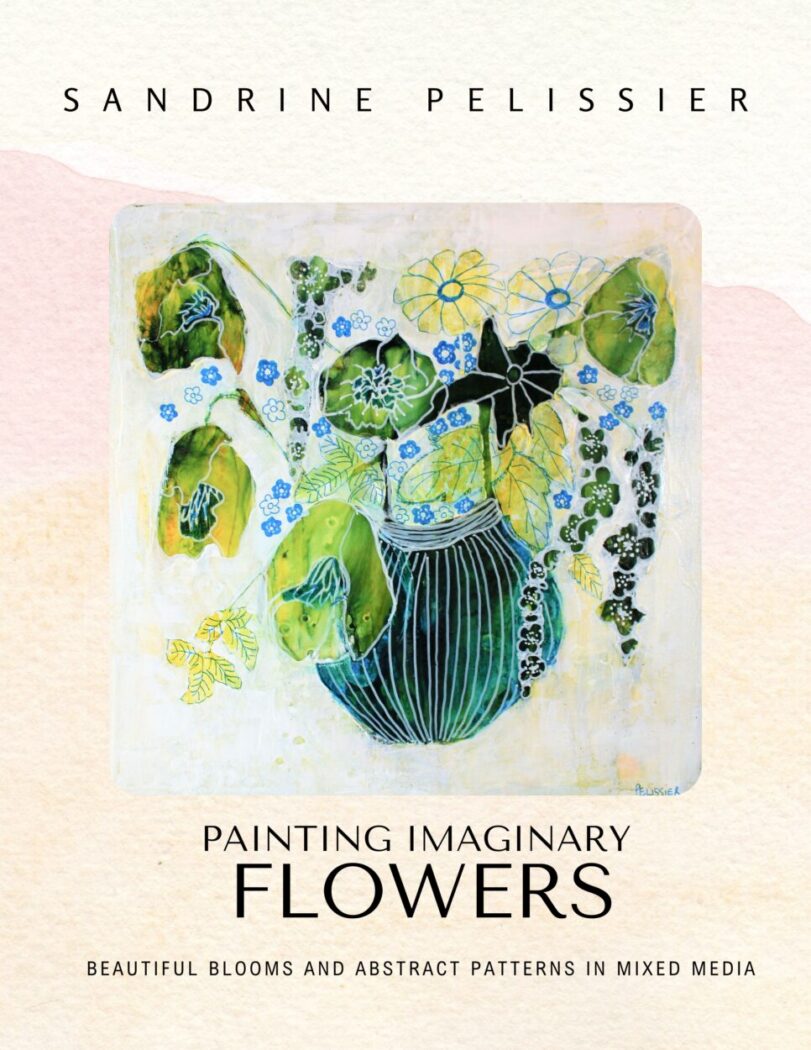
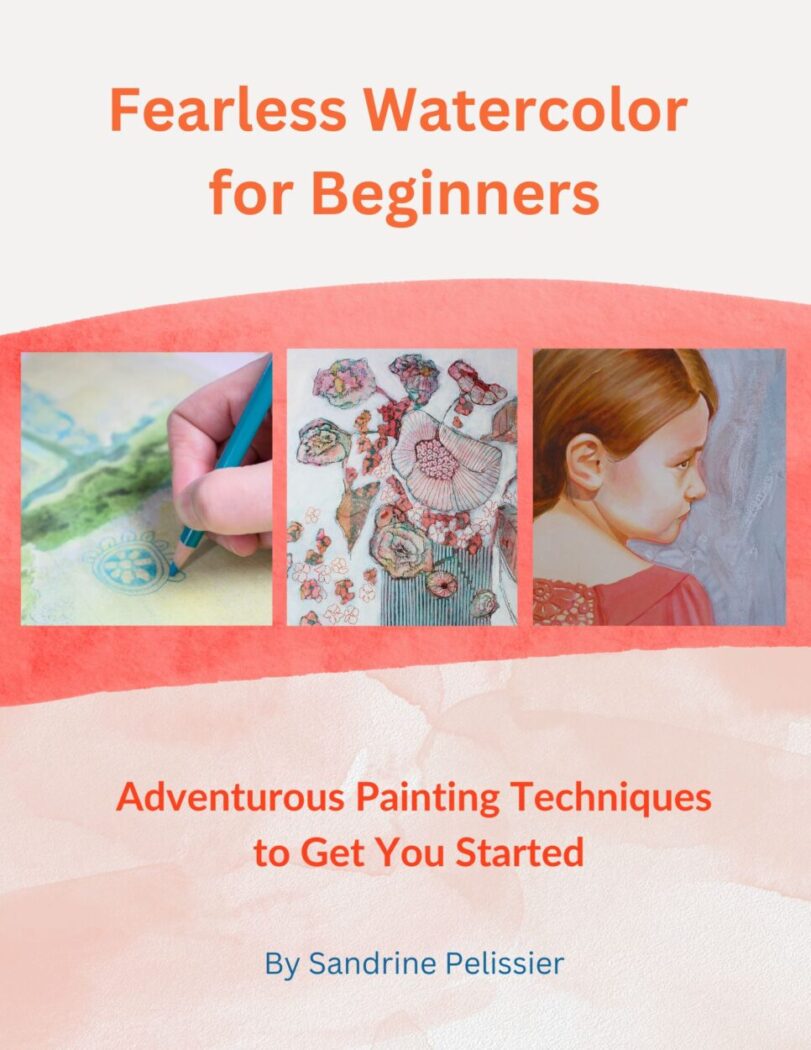

Comments (22)
Shay Anderson
Thank you so much for your content, it is very helpful. Just to be sure I am clear; can I frame an acrylic painting I did on paper and sprayed with varnish (also mounted on thin board for rigidity) in a frame with no mat and glass, and have it stand up to the elements just as a painting on canvas framed in the same manner would? Thank you so much! Enjoy the day!
Sandrine Pelissier
Hello Shay,
Yes you could do that, the only difference with that and a framed painting is that you don’t have the protection of the glass if you scratch the painting.
Carol Avery
Thank you for information.
With watercolour paintings and using the dorland wax to seal, can you then frame with traditional frame, that is with glass front?
Sandrine
I guess you could although the main purpose of the wax is to seal the watercolor so you can display it without a frame. But yes, if you like the look of wax on watercolor, you could also frame it.
Angela Conley
What kind of varnish are you using? I didn’t see any product links?
Sandrine Pelissier
I am using Liquitex Soluvar or Gamvar by Gamblin varnishes.
Andrea
Hi – Thanks for your post, it gave me some good ideas. My art is decoupage on mounted canvas. I’ve been agonizing over how to finish it, aside from the obvious which would be to slather a few more layers of mod podge over top. I worry that if I change glues or try something different, it might chemically cause problems. At least you’ve given me some ideas to investigate!
Sandrine Pelissier
Thanks Andrea:) I would check if mod podge is archival and acid free, alternatively you can try acrylic medium.
Lisa Gibson
Thank you so much for your tutorials – I’ve learned a lot from them! What kind of brush are you using with the varnish to get such a smooth finish?
Sandrine Pelissier
The brush I am using is : Dynamic Flowline HB 187407
Lisa Gibson
Thank you, Sandrine!
lewis309956414400
Sandrine,
I have a painting that I mounted on a cradled wall box. It was an old watercolor and so I am practicing with it. How much of the wax would you say you apply? Is it sparingly? Or thick?
Also, I found a couple bottles of the speedball super pigmented ink. That works really well in the nib. I was wondering when you refer to ‘liquid acrylics’ do you mean like the 2 oz bottles you can get at craft store? It’s hard to get that to work as well.
Melanie Lewis
Thank you so much.
I watched the webinar on You Tube! it was great
Sandrine Pelissier
Thanks Melanie!
I would say I am applying the wax in a rather thick layer as you will see it gets absorbed a bit by the paper.
For fluid acrylic I recommend you use the professional fluid acrylic, the dollar store acrylic won’t work that well. I like to use fluid acrylics and Inks (technically they are fluid acrylics) by the brands: Golden, FW, Opus, Speedball and Liquitex.
1fineartist69520400
Missed the 6/23 free webinar FEARLESS WATERCOLOR…how can I receive a link. I did register.
Thanks,
Rose F.
Sandrine Pelissier
Hello Rose,
The video will be available on the Artist’s network You tube channel in the next few days. Once it is published, I will share the link on my Facebook page:
https://www.facebook.com/paintingdemos
It should also be soon available here: http://www.artistsnetwork.com/artists-network-online-events
Sandrine Pelissier
Hi 1fineartist69520400
The youtube video of my webinar is up and you can see it here: https://www.youtube.com/watch?v=DUIoap-s2Fo
Judy Ghander
I am anxious to purchase your new book “Fearless Watercolor” When will it be ready for purchase, not pre ordering? You are so talented and a source of inspiration to me.
Sandrine Pelissier
Thanks Judy for your nice comment 🙂 publication date is set for June 26, so it will be available at that time.
Denise
Je vous suis depuis quelques temps. Félicitations pour vos arbres, ils sont vibrants ! Merci pour vos videos et vos explications si instructives. Vous m’avez ouvert des horizons : les mixed medias, les zentangles, le montage du papier sur cadre en bois, le vernissage, etc…
Faut-il coller également un papier au verso, pour éviter que le support ne gondole ?
Merci pour votre réponse et au plaisir de vous lire .
Sandrine Pelissier
Merci Denise 🙂
Je “colle” le papier avec du gel medium epais, car si j’utilise une colle trop liquide, le bois l’absorbe trop vite et le papier n’hadere pas uniformement au support.
J’applique le gel medium sur le cote du bois qui sera en contact avec le papier, c’est un bois epais alors je n’ai pas besoin de coller autre chose de l’autre cote.J’essaie de ne pas metter de medium sur le cote du papier ou je vais peindre pour ne pas modifier ses proprietes d’absorption.
LaVonda
I’m new to your website and just wanted you to know I am so excited to have found you. I think I am going to learn a lot from you.
Sandrine Pelissier
Thanks LaVonda! I am very happy to hear that 🙂